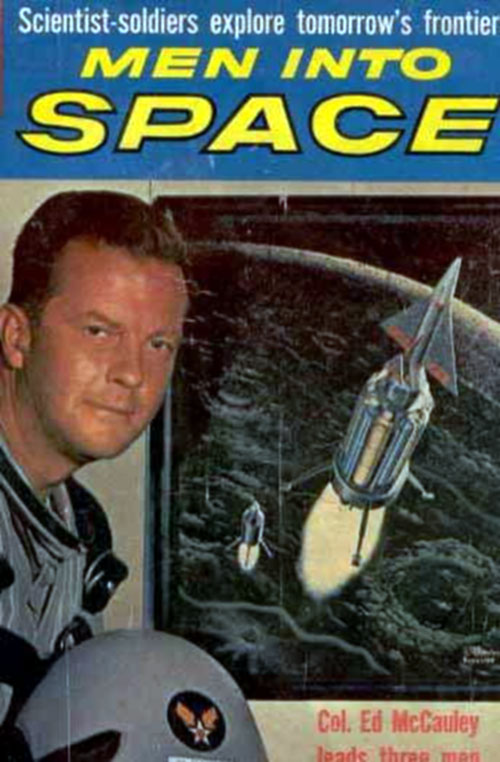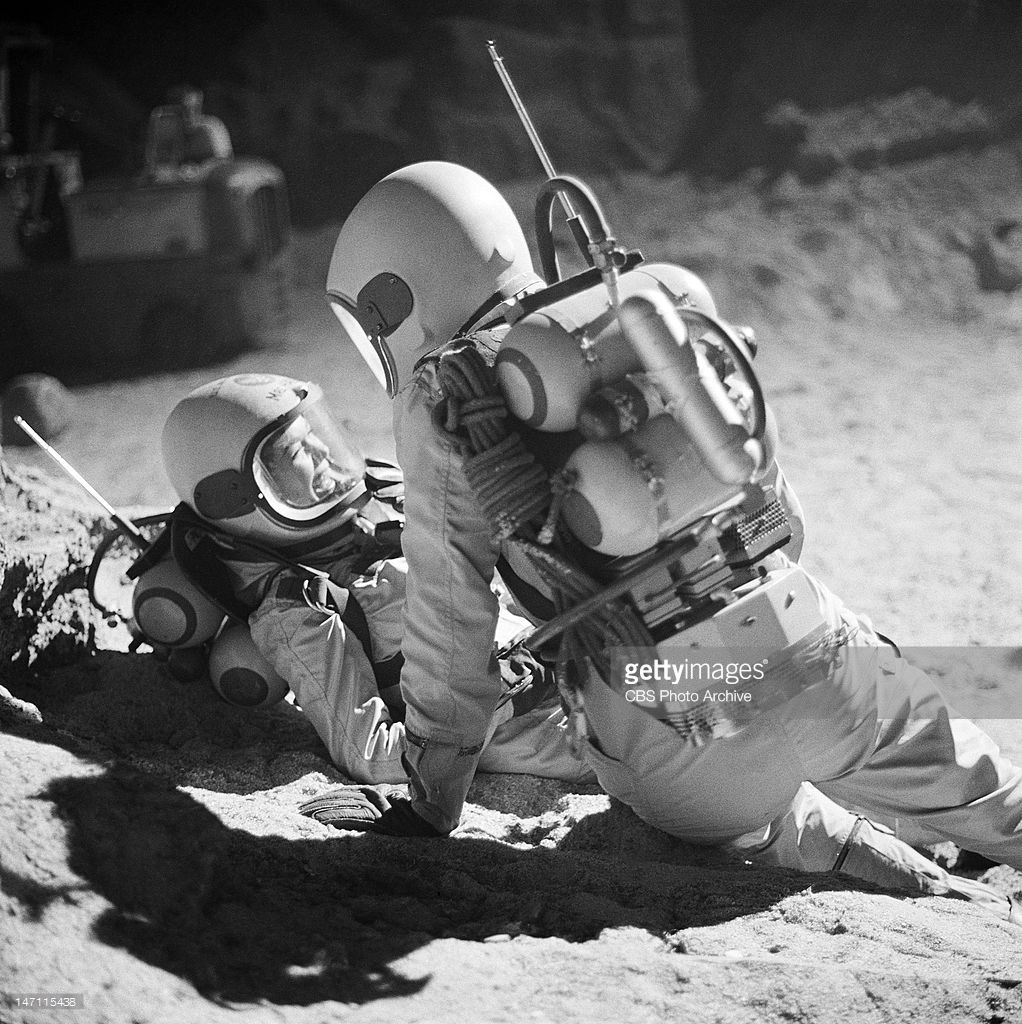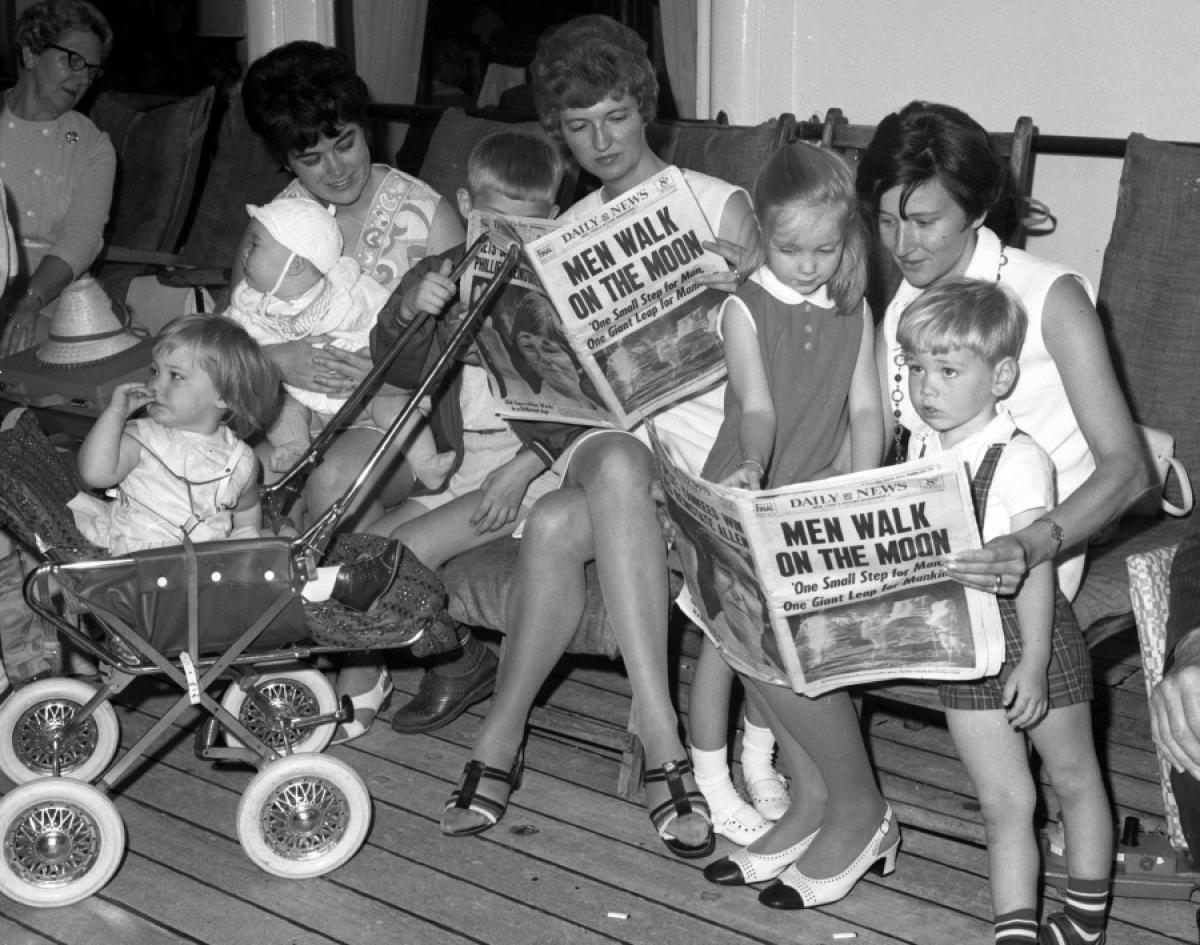IMDb metadata: run time per episode in 26 minutes, rated 8.1 by a paltry 122 cinemitizens.
A one-year television series in thirty-eight episodes from the United States depicting space flight pioneering with respectful attention paid to the science and technology. Willy Ley would have approved. Maybe he did. It stars everyman William Lundigan.

And he alone is the constant through the episodes. No other player is listed for more than eight outings. That may partly explain its failure, not enough characters to develop audience identifications, together with the lack of dramatics from calm, cool, collected, and sometimes nearly catatonic Bill. The tone is realistic and the presentation emphasises the difficulties. Space flight is hard enough without zombies, meteors, or John Carradine.
The drama emerges from the divergences among the crew, and occasionally from mechanical elements. Some of the crew are determined to complete the mission even at high risk, and others are more cautious. Everything is being done for the first time, and some of the equipment fails. Think Apollo 13. Think low-bid contractors.
The series was made with what appears to be the unstinting cooperation of the USAF, as noted in the terminal screen acknowledgements. These Saturn rockets are military without a doubt.
In 1958 President Dwight Eisenhower created NASA to explore space. There must be quite a story there of Ike wresting some of the missiles from the generals. But who mistrusts generals more than a one-time general, and who better to convince Congress likewise than that same general.
No doubt this creation was part of a policy to encourage the Soviets not to use space for military purposes. But of course there must have been some serious cooperation between NASA and USAF that continues today. Those rockets grow on money trees in the defence budget green house. No doubt there have been occasions when the USAF made a bid to take over from NASA, too. These bureaucratic fights would be fascinating studies in themselves.
This series might have appealed to the Air Force as publicity for its sole-agent claims to space. Though the references to an enemy ‘them’ are few. Indeed in one episode the safe return of Bill himself is only possible with the cooperation of a Russian tracking station. No doubt when the script writers get bored they will throw in some sabotage, and that friend of the jaded writer, the meteor, but not in the early going.
Even so it is notable that each of three episodes seen so far end in failure. The Moon orbit is aborted and the whole crew returns safely. The Moon landing is compromised and one crewman dies on the Moon, and the rest have to leave before completing the mission. Ditto the third, another injury truncates the it. The program, a cynic might say, was creating a climate of low expectations for space exploration.
 Man down!
Man down!
The key is so low that the first steps on the Moon are nothing much. The door opens, down the ladder they go and start standing around waiting for the director to cue them. No dramatic pause before the step onto the surface. No finely calibrated remark. No excitement.

No speeches and no flag. Neil Armstrong got no tips from this scene for his step into eternity.
While there is a revolving door of characters the sets are of great verisimilitude for the day, thanks no doubt to the Air Force. The acting is fine, the more so considering how quickly each episode was made. Maybe not in one-take, but close to it. The worried wives, look very worried. The anxious generals on the ground look anxious. The stressed flyboys look stressed. By the way, the ubiquitous Australian Michael Pate appears in one episode.
The one mistake is in the portrayal of the representatives of the media of the day as sober, sensible, and civil, but then maybe they were back in those days. Certainly today no self-disrespecting ABC journalist would fail to badger the worried wives with questions about death, children about absent fathers, generals about incompetence, and so on. Why let the dust settle when stirring it up goes on the resumé.
Like the acting and realism, the special effects with models and travelling matte are far superior to many a B-movie reviewed on this blog. Free-fall in the cabin is fun to watch. In space there is no flame from the rockets. The EVA astronauts are floating in the ether.
The Mind Palace has no entry for this program from the time. It was programmed against ‘The Adventures of Ozzie and Harriet Nelson’ and ‘The Price is Right,’ so I guess our boob tube was on the Nelsons in 1959-1960.
Skip to content
